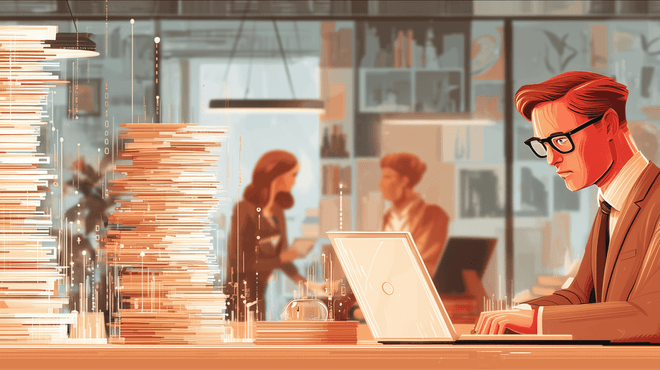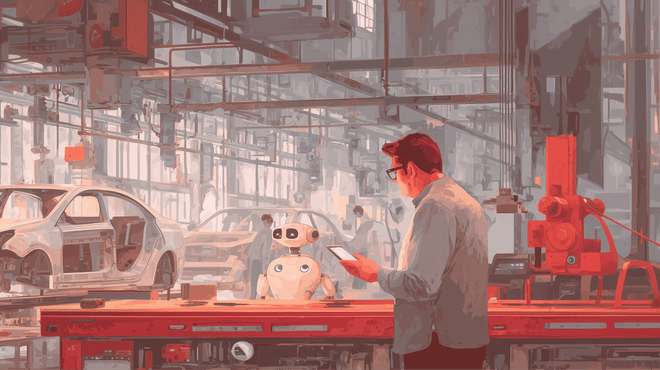Despite being in the days of infancy, Augmented Reality (AR) & Virtual Reality (VR) are already having a positive impact on the healthcare industry. This technological innovation is entirely changing the way healthcare sectors used to operate.
It has redefined the ways enabling doctors to interact with AR applications which is ultimately improving the outcomes & patient’s education. AR/VR is simplifying the process for both doctors & patients. If we talk about AR, it involves the use of cameras, display & sensors to transfer the information to the real world. On the other hand, VR creates a completely new world.
Besides, AR technology improves the view of its users. It does by superimposing the data & rendering 3D elements. Whereas, VR entirely changes the view with different scenes. Both technological advancements have a positive impacts. It improves the mental & physical health of patients. Not just this, AR/VR enabled devices provide healthcare sector with the easiest way to diagnose and treat illnesses. Also, it is helping scientific, medical & academic professionals in understanding different diseases & health conditions. If we compare AR/VR with other technologies & treatments. We would find out that it is cheaper & more accessible.
A consulting company based in the United States with the name “Grand View Research” has stated the following:
- Healthcare market for AR & VR would probably grow by $5.1 billion by the year 2025.
- Also, the evolution is not going to stop anytime soon.
Let’s have a look at how AR & VR have transformed the healthcare industry worldwide.
1. Revolutionizing the surgeon’s training
In the old times, medical students used to catch a glimpse of operation over the shoulder of a surgeon. It was very hard for them to get the complete view of the live operation — this is where AR/VR technology comes in. This technological innovation can add real value to the process while making it easier for the students. However, people working in the health care industry worldwide have accepted the change. The Royal London Hospital in the UK performed operation for the removal of cancerous tissue using a VR technology allowing students to watch the entire operation live.
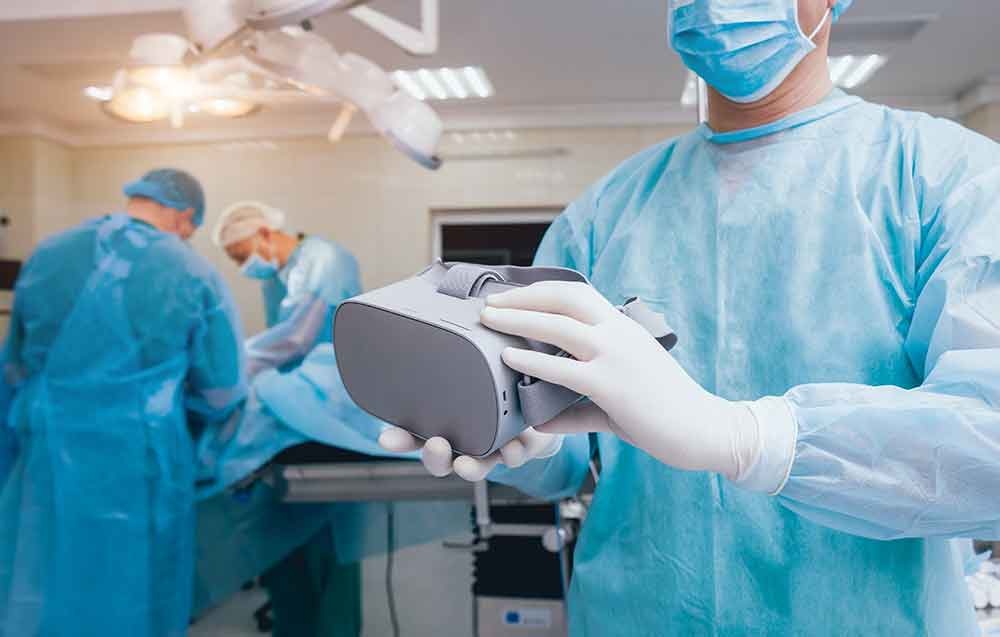
Besides, many surgeons are using VR headsets to collaborate with other surgeons worldwide. A colorectal surgeon Professor Shafi Ahmed from St Bartholomew’s hospital used AR/VR technology. With this he bought the surgeons together to perform an operation. During the operation, the surgeons could see what the professor was doing. Moreover, their graphic avatars made Professor Ahmed feel as if they were actually in the operation theatre.
2. Pain management
Since VR technology acts as a diversion, it is highly effective in pain management. With the help of this technology, the neural pathway of the brain can be affected the same as real-life experience. It creates memories that help in forgetting the pain. If not it can marginalize the pain patients are suffering from. By using AR/VR people are now offering pain medications & therapies by sharing their life-changing incidents. Besides, 52% reduction has been observed in the patients who were going through chronic pain.
3. Exploring cancer in 3D
Scientists from the different institute are using VR 3D model to look at the disease in a completely new way. On top of this, with the help of VR technology, the sample of the cancerous tumour can be taken out from a patient. Also, it can be studied in detail from almost all the angle. In addition, VR 3D model is helping cancer researcher to understand the disease while finding new treatments for it.
4. Reducing the Depression’s Symptoms
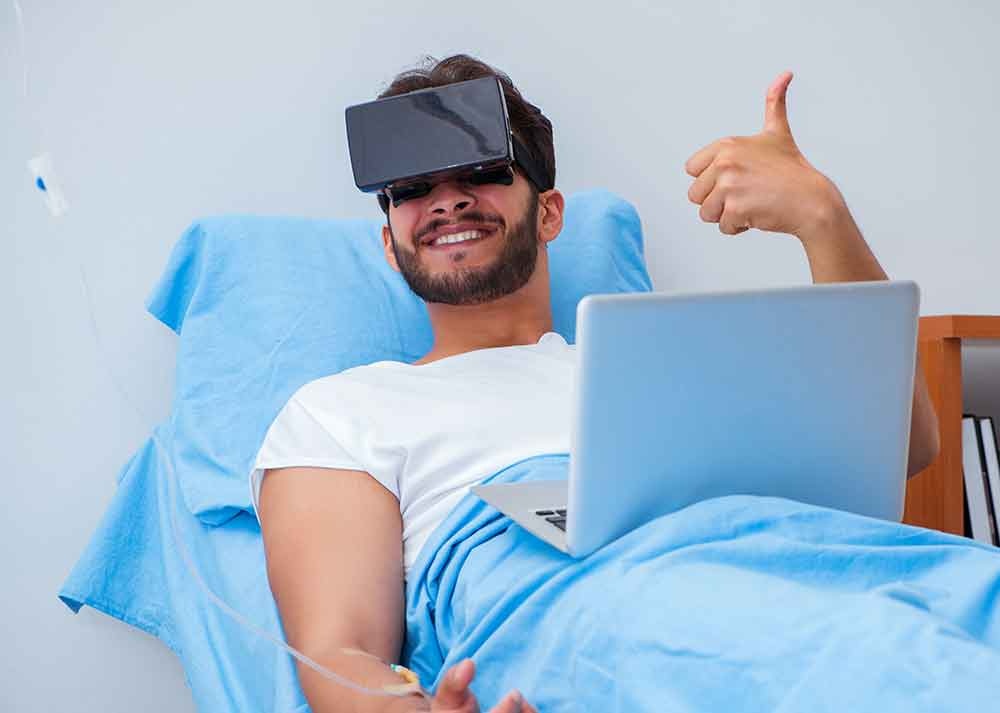
Before the advent of such technological developments patients used to suffer. Mostly they used to experience depression & anxiety from a longer period of time. But now it has been observed that 27% of patients having clinical depression are improving. They are now experiencing clinical progress from using virtual reality as a part of the treatment. As per the study from ICREA-University of Barcelona& University College London (UCL), a new & different kind of VR therapy is effective. It can help patients in relieving the symptoms of depression; where the patients will receive their own soothing words of comfort.
5. Early detection of diseases
In earlier times it was difficult for the doctors to detect the diseases especially Alzheimer. The introduction of AR/VR technology has made it possible to detect Alzheimer at the early stage. According to the study from the University of Cambridge, they used a VR-based navigation test on the patients. Their aim was to diagnose the mild signs of Alzheimer disease. It was found to be more accurate in comparison with other traditional tests. Furthermore, Alzheimer society in the UK, said they will provide funds fora three-year research project. In which the VR technology will detect the early symptoms of Alzheimer.
6. Skill Development
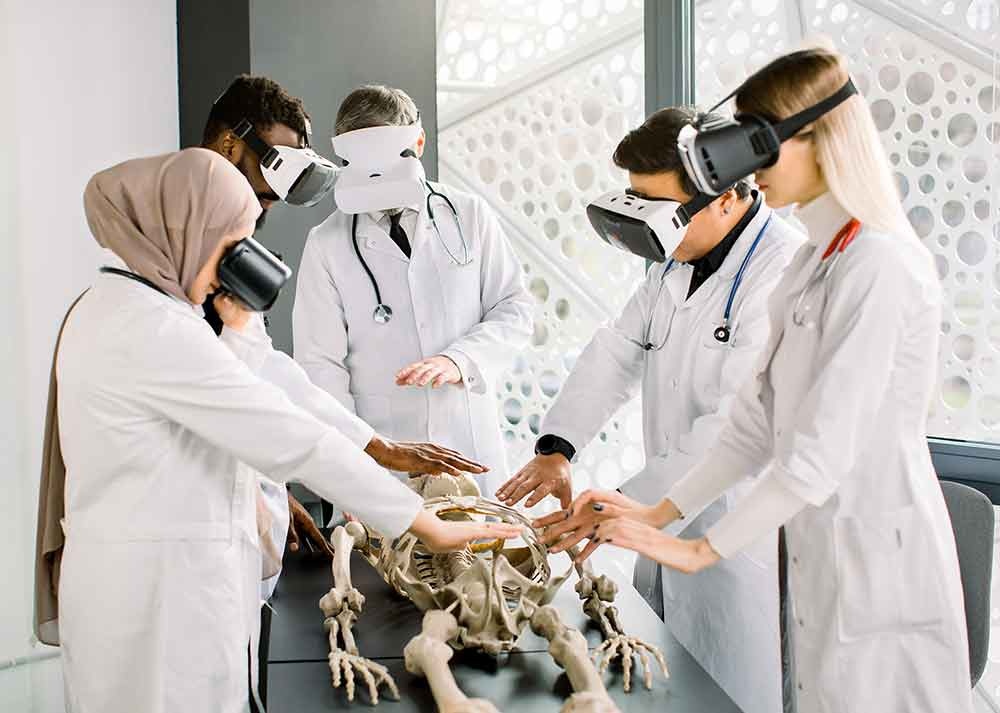
For medical students or professionals, it is necessary to perform physical tasks. They may include drawing blood, inserting catheter & surgeries. Before the introduction of VR & AR, students used to learn from traditional methods. It includes slides, textbooks while watching the professionals performing. But this technological revolution has enabled the students to learn the skills by actually performing it. Students now can learn through mixed and virtual reality environment. As a result of this, the quality of learning has been improved with a higher degree of accuracy.
7. Improved patient education
Before offering any treatment to the patients for any disease it is necessary to educate them regarding their illness. AR & VR technologies provide immersive education to patients who might not be aware of a certain kind of disease. Healthcare professionals where use AR/VR to educate interns. Also use this technology to help patients gain useful insights during consultation. In this manner, healthcare professionals will gain the confidence of the patients. While putting them in a position to make an informed decision. Also, when patients understand the illness & its seriousness they tend to show more self-care.
8. Virtual assistance in medical facilities
Augmented reality-based navigation can make it easy & convenient for patients to find out what they are looking for. With AR/VR, a medical professional can also find the right spot including equipment during critical situations & emergencies. Virtual assistance with the help of AR, can improve the orientation experience in medical clinics & hospitals. It also ensures that the audience has grasped true essence of the information.
Wrapping it up!
Like every other disruptive technology, people will take time in accepting this new invention. However, it has already gained popularity among healthcare professional & researchers. But still, a few years may be required to become a trend. So, all the medical students & professionals should embrace their self for a change. Because the day is not far where AR/VR will be used just like stethoscopes & thermometers.
If you are looking for more guidance on AR/VR technology —contact us. We are just a click away.

